22 places you can't miss in Galicia
Hello everybody once again! In today's post I'm going to talk you about 22 places you shouldn't miss in Galicia, where I live. How many of them did you know?
- Obradoiro square, in Santiago de Compostela. It's the final destination of the pilgrim who walked through one of the Jacobean routes. Men and women from all around the world arrive with their backpacks, both in summer and in winter, be it warm or cold. After making such an effort (a superhuman effort! ), and with feet covered in blisters, you have to admire the monumental complex, take a deep breath and continue with the ritual. This consists in hugging the Saint James apostle, which is at the back of the main altar of the basilica. The atmosphere is usually impressive, mysticism and spirituality can be felt everywhere. Everyone's faces show disbelief and relief as a result of having reached the goal. My History of Art teacher once told me that a lot of people even bite the apostle when hugging it, in order to take some of the precious gems. Incredible, I know. To sum it up, if Paris is well worth a mass, then so is Santiago.

- Cabo Finisterre. As many of you may intuitively know, Finisterre comes from "end of the world" in Spanish ("el fin de la tierra"). Before the explorers departed to discover new lands, the ancient people thought there was nothing beyond this point. It is considered a pilgrimage place as well, with a vast view of the ocean. The old lighthouse is a small hotel with few rooms, and it's usually difficult to reserve one. It's better to carry stones in your pockets when it's stormy. Many shipwrecks took place in that zone, wrecked by the wind. Incidentally, pilgrims remove their shoes as soon as reaching the place, and they leave them abandoned on the stones of the cliff. It is common to observe fascinated people, in a praying or reflective attitude.
- Ortegal Cape. It's part of a village called Cariño, but you have to drive (the road is very narrow) in order to reach the cliffs and the protruding areas. It marks the exact meeting point between the Atlantic Ocean and the Bay of Biscay. This zone is signed as "kilometre 0", though I would name it "nautical mile 0" haha. The landscape is impressive, with "Estaca de Bares" in the distance. It's best to go during low season and make sure you have a lot of memory on your phone, so you can repeatedly take photos.
- San Andrés de Teixido. Of all the places in Galicia, this one may be the most indescribable one. During winter it's freezing cold. Be careful with the cows and horses! In the upper zone there's a wind farm you can go to. The windmills are impressive, both because of their height and the dimension of their blades. In order to get to the centre of the town, you have to go down a very steep slope. You will find the sanctuary there which is very humble. It is said that if you don't go to San Andrés de Teixido alive, you will do when you're dead. Its cliffs are, believe it or not, some of the highest ones in Europe.
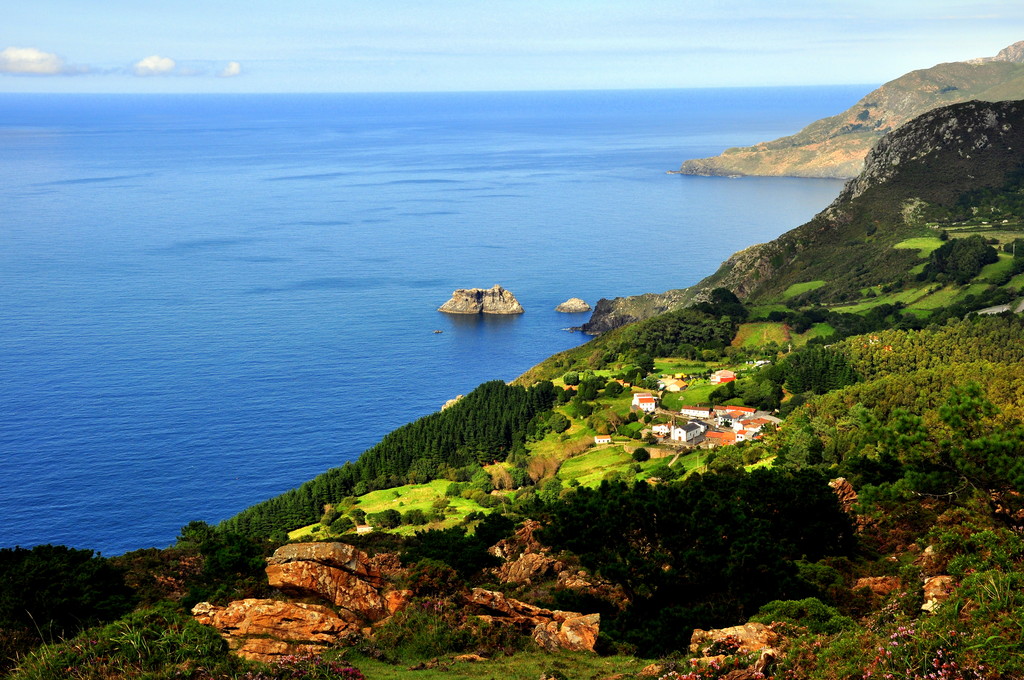
- The walls of Lugo. Even if you go there only once, it's worth it just to visit Lugo. The walls, which are Roman, surround the old town. Some sections are in a better condition than the others, but it has been kept entirely. If you want to walk it all you'd better prepare yourself, because it measures more than two kilometres; you can imagine what the walled cities were like. You can stand in any of its towers and count how many entrance gates there are. At the end, recover some strength on "rúa dos viños", which in English means Wine Street.
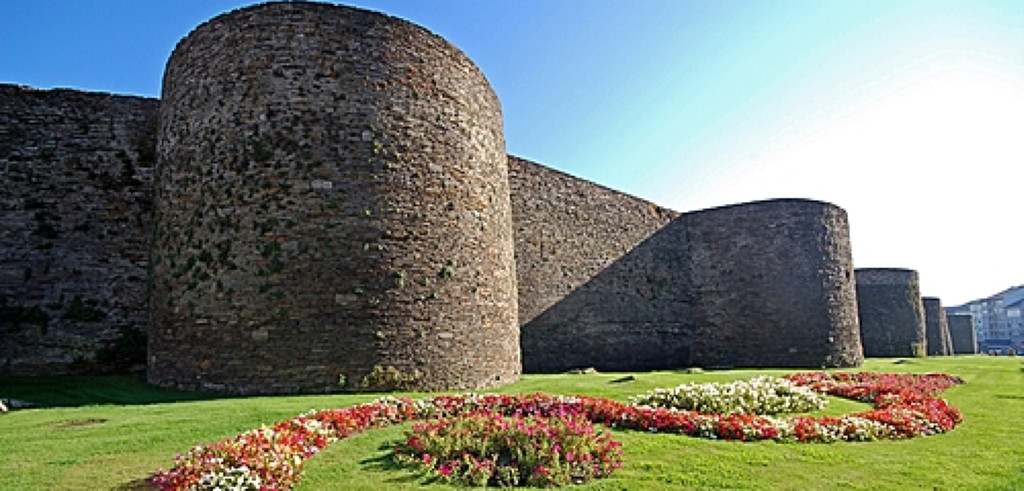
- Ribadavia. It's in the "Ourense province", which is part of inland Galicia. Walking through it's Jewish quarter is quite an experience. If you feel like going on a trip to the past, I recommend going to the medieval festival which is celebrated in August. The environment of the Jewish quarter is reconstructed down to the last detail, and you will find guilds and products, which have to be paid for with "maravedís", (the currency used in Spain during medieval times). At that time of the year it's usually very hot, so choose your outfit wisely.
- Tui. It's a natural border between Spain and Portugal; they used to have a customs point at the entrance of the old bridge. It has a prominent collection of monuments and an inn, in case you want to enjoy spending a luxury night there. The landscape, with the Minho river, is certainly beautiful. You cannot miss the Santa María Cathedral.
- Tower of Hercules. In order to see this ancient Roman lighthouse, you have to visit the city of Coruña. It's a World Heritage site whose height is noteworthy. You have to take advantage of being there and visit the city; I recommend the planetarium in the House of Sciences (la casa de las ciencias), which is a typical place for Galician students, as well as a jogging zone. It's always full of people.
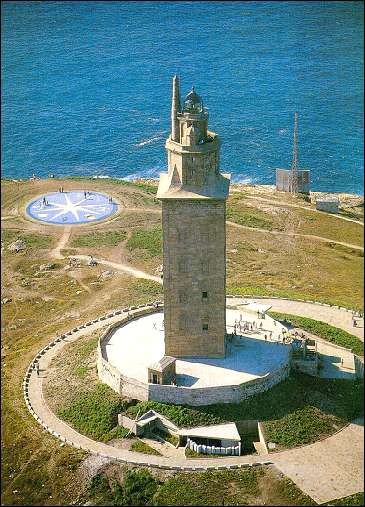
- Combarro. If you are looking for a picturesque village, then go to Combarro. You have to leave the city of Pontevedra towards Sanxenxo. It's full of fisherman houses, in between extremely narrow alleys. You can eat on the terraces right at the edge of the estuary and admire the "hórreos" and "cruceiros". It's quite popular during summer, so the road is usually grid-locked. I recommend organising the excursion, but remember to take into account the times that public transport runs.
- Pontevedra City. It's undoubtedly worthy of a visit after its great transformation over the last few years. The humanisation and rehabilitation works in the Old Town managed to win an international award for the city. The only issue, which divides the public opinion on the topic: which is the proximity of the town to a cellulose fabric. However, despite that, it's the city with the least pollution in Spain!
- La Toja island. For the most nostalgic and lovers of the hydrotherapy, this island offers a spa, a casino, golf courses, or in short: a luxurious atmosphere. I have a necklace from there, sold by one of the women who are more commonly known as "collareiras".
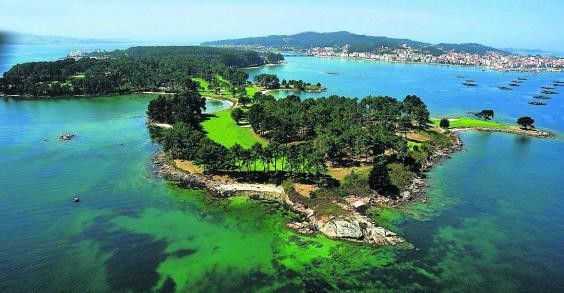
- Cambados. This is a municipality which has to be seen all at once. It's a vineyard zone, so you can imagine why.
- Dunes of Corrubedo. As the name says, this place consists of sand dunes. The ancient tradition asked any visitors to make the effort to climb up them. Nowadays it's a protected, regulated and organized natural park. zstrong>The beach is gorgeous, a must-see!
- Illas Atlánticas. Four islands make up one of the most well-known wonders of Galicia. They are the National Park of the Cíes Islands, Ons, Sálvora and Cortegada. The visits are limited, and a permit is required to look around the islands. Their waters are some of the most transparent that you'll have ever seen in your life.
- Fort of Baroña. Even though there are many Forts, I recommend this one in particular. It's located right on the edge of the coast, in Porto do Son. You have to go down a little path on the hill, until you get to the promontory. In this fort it's possible to move freely through the archaeological remains.
- Caurel Mountain Range. It's located in the province of Lugo, in a considerably remote place. Recommended for nature lovers, as well as for biologists and landscapists. There are hiking routes, although in winter they are pretty tough. It is usually difficult both getting and staying there, due to the snow. However, there are private houses for renting. The Galician spoken there is not similar to any other. In a excursion with the school it was possible for me to practice speleology (the study of caves).
- Sil Canyons. There are several catamarans organised for the tourists, taking them around so they can enjoy the views. These canyons consist of impressive gorges through which the longest tributary of the Minho River flows.
- San Simón Island. Historically interesting, it's located in the estuary of Vigo. It used to be a prison, leper hospital and monastery. Organised visits are offered.
- Fragas do Eume. If you are fond of riverside landscapes, you should go for a walk to this forest. It will lead you, while enjoying various different species of trees, to the Caaveiro monastery.
- Padrón. For the literature lovers, Padron cannot be forgotten. It is the birthplace of Rosalía de Castro, whose museum-house is open to the public in her honour. Try to plan your day so you can visit Iria Flavia, where the foundation of the late Literature Nobel Prize winner, Camilo José Cela, is found.
- Beach of the Cathedrals. Next to the Bay of Biscay, you will find the natural sculptures of Ribadeo. Erosion has eaten away at the rocks, forming different shapes which are visible to the eye depending on level of the tide. They really arouse admiration, which is why, at the moment, visits are limited. It would be much better if you went during the low season.
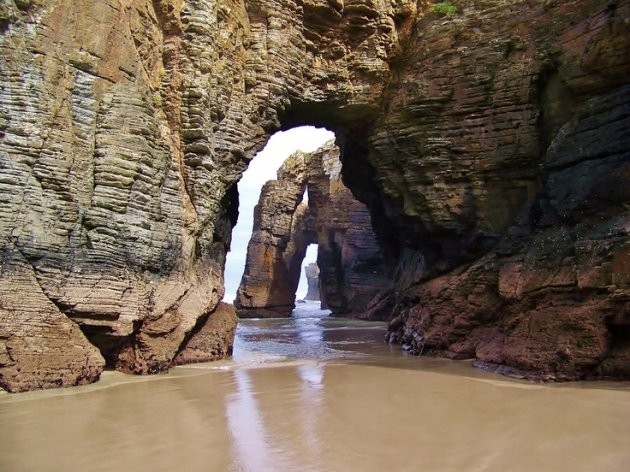
- Mount Pindo. Following the line of the aforementioned rocks, we come to Mount Pindo. Mount Pindo is made from granite which is so eroded, you could swear they were hand-made sculptures.
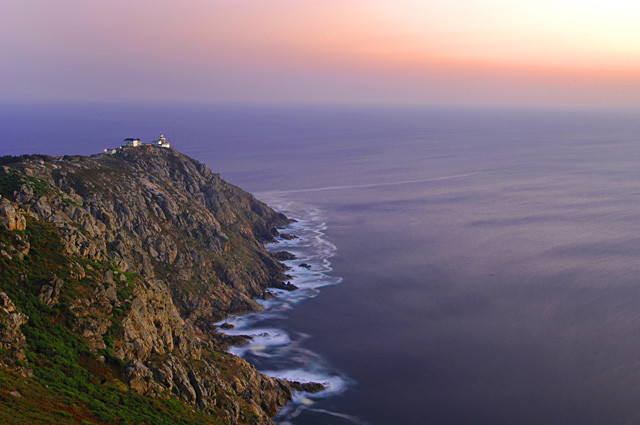
And that's all for today! I hope you liked my post. Every time I write a post like this one I realise how lucky I am to live where I live. See you tomorrow! I'll be writing you from Oporto.
Photo gallery
Content available in other languages
Want to have your own Erasmus blog?
If you are experiencing living abroad, you're an avid traveller or want to promote the city where you live... create your own blog and share your adventures!
I want to create my Erasmus blog! →










Comments (0 comments)